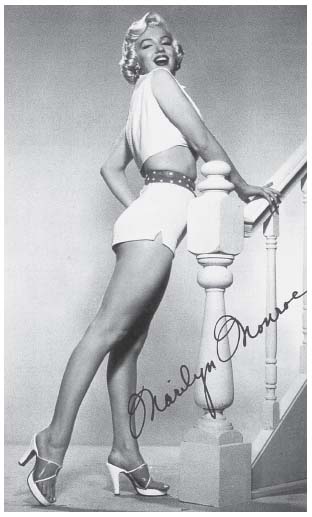The Genius and the Goddess (15 page)
Read The Genius and the Goddess Online
Authors: Jeffrey Meyers

Toward the end of 1943 Miller was offered $750 a week to write
a screenplay based on Ernie Pyle's frontline war dispatches during the
Italian campaign. His film
script was rewritten and made into the
successful
Story of GI Joe
(1945) with Burgess Meredith and Robert
Mitchum. Miller got no screen credit; but his first book,
Situation
Normal
(1944), about the problems that soldiers had when they returned
from combat and tried to adjust to civilian life, grew out of his research
for the Ernie Pyle film. This book was dedicated to his older brother,
Kermit, who was serving as a lieutenant in the American army.
Miller's editor,
Frank Taylor, at the highbrow publishers Reynal &
Hitchcock, was a tall, handsome, stylish man. He had serious left-wing
views and socialized with politically committed artists at his
home in Greenwich Village. Taylor became a close friend and, later
on, the producer of
The Misfits
. He also published
Focus
(1945), Miller's
only novel, with the fashionable postwar theme of alienation. The
central character is a gentile whose new glasses make him look Jewish.
His appearance provokes anti-Semitic hostility, and he at first tries to
maintain his non-Jewish status. Eventually he accepts his new identity
and fights against the prejudice he's encountered. The subject of
anti-Semitism was especially relevant between the liberation of the
Nazi extermination camps in 1945 and the founding of the state of
Israel in 1948. Readers were eager for serious fiction after the war
and
Focus
(according to Miller) sold a surprising 90,000 copies.
Miller disliked his mother-in-law's flat, unemphatic Ohio speech
and her Catholic belief that earthly life was a disaster. But she told
him the story that inspired
All My Sons
, his first triumphant success
in the theater. A local newspaper reported that during the war the
Wright Aeronautics Corporation of Ohio had bribed army inspectors
to approve defective airplane engines. The novelist and critic
Mary McCarthy pointed out that Miller used Henrik Ibsen's device
of the fatal secret, in which crime and guilt enter an ordinary domestic
scene and build up to a tragic climax. She observed that "
All My Sons
was a social indictment taken, almost directly, from Ibsen's
Pillars of
Society
[1877]. The coffin ships, rotten, unseaworthy vessels caulked
over to give the appearance of soundness, become defective airplanes
sold to the government by a corner-cutting manufacturer during the
Second World War." Other critics noted the influence of
Ibsen's
An
Enemy of the People
(1882), which Miller adapted for the American
stage in 1950. In this play, "an idealistic doctor discovers that the spring
waters from which his spa town draws its wealth are dangerously
contaminated. As Stockmann's fellow citizens realize the financial implications
of his research, he comes under increasing pressure to keep
silent."
In Miller's realistic tragedy – brilliantly directed for the stage by
Elia Kazan and starring Ed Begley and Arthur Kennedy – Joe Keller
sells cracked cylinder heads to the Army Air Force, which cause a
number of fatal plane crashes. He also allows his employee and neighbor
to take the blame and go to jail. When Keller's son, a pilot, dies in
the war, his younger son tells Keller that his brother had discovered
the fatal secret and committed suicide out of shame. Appalled by his
own greed, and faced with the ruin of his name, business and family,
Keller finally accepts his guilt and kills himself. After Miller won the
Drama Critics' Circle Award for the best new American play of the
season, and several reviewers suggested that the director and actors
were more responsible for its success than the author, he ironically
remarked, "Everyone's son but mine!" His sudden fame attracted attention
in Hollywood and in 1947 he was offered, but turned down,
$2,500 to write the screenplay for Alfred Hitchcock's
Rope
, made the
following year with James Stewart and Farley Granger.
In a frenzy of inspiration Miller wrote the first act of his best-known
play,
Death of a Salesman
, in less than twenty-four hours. The
play, again directed by Kazan, starred Lee J. Cobb and Mildred Dunnock
as Willy and Linda Loman, Arthur Kennedy and Cameron Mitchell
as their sons. Like
All My Sons
, it was a domestic tragedy that portrayed
the rivalry of two brothers, a loyal wife and a father who kills himself.
Willy's brother Ben, a ruthlessly successful figure who thrives in a
cutthroat world, makes a dream-like appearance. No one has noticed
that the exotic, authoritarian Ben was inspired by Kurtz in
Joseph
Conrad's
Heart of Darkness
(1899). Marlow, who's been sent upriver
and into the jungle to rescue the pitiless and fanatical Kurtz, says with
a mixture of awe and condemnation that Kurtz "had collected, bartered,
swindled, or stolen more ivory than all the other agents together."
Ben boasts to Willy, a weak failure: "When I was seventeen I walked
into the jungle, and when I was twenty-one I walked out. And by
God I was rich."
6
Ben, a modern-day Kurtz, is more interested in
accumulating fabulous wealth than exerting absolute power. He feels
a sense of pure triumph rather than horrified remorse about exploiting
the natives and tearing the riches out of the African earth.
Miller earned a fabulous $160,000 a year from the New York
production of
Salesman
and an equal amount from several touring
companies. Always careful with money, he now lashed out by buying
a house in Brooklyn Heights, a farm in Connecticut and a new car.
When Frank Taylor sent Miller's script to Dore Schary at MGM and
suggested he buy the film rights, Schary called it "the most depressing
fucking thing I ever read. Nobody would ever want to see this kind
of film." The play won the Pulitzer Prize, and became a film in 1951,
with Fredric March playing Willy, Kevin McCarthy his son Biff, and
Dunnock and Mitchell reprising their Broadway roles. It is widely
taught in schools and colleges, and by 2005 had sold more than eleven
million copies.
Miller was a
reserved, guarded and withdrawn man who rarely showed
his deepest feelings. He was a cool and distant father, had few close
friends and eventually broke with his most intimate companions: with
Elia Kazan for political reasons and with Norman
Rosten for siding
with Marilyn after their divorce. Miller also pulled Marilyn away from
her own friends. He persuaded her to sever relations with Milton and
Amy Greene, and tried to diminish the pernicious influence of Lee
and Paula Strasberg.
Miller's dedications shed some light on his limited friendships.
Many of his books had no dedications; and sixteen of his twenty-one
dedications were given to his family: to his brother, three wives, three
children and his third wife's parents (but not to his own father and
mother). Of the remaining five dedications,
Theater Essays
was dedicated
to his college playwriting teacher
Kenneth Rowe;
All My Sons
to Kazan; and
A View from the Bridge
to the writer and translator James
Stern "for his encouragement." Two other books were dedicated to
people who had recently died:
I Don't Need You Any More
to the
memory of his editor at Viking,
Pascal Covici, and
The Misfits
"to
Clark Gable, who did not know how to hate."
Several colleagues were irritated by Miller's characteristic pompous
and
self-righteous rectitude.
Harold Clurman, a founder of the Group
Theater and director of Miller's
Incident at Vichy
, observed that "Miller,
earnest and upright, is sustained by a sense of mission. . . . For all his
unbending seriousness and a certain coldness of manner, there is more
humor in him than is generally supposed. He is much less rigid now
than he is said to have been in his younger days, when he put people
off."
Robert Lewis directed Miller's adaptation of
An
Enemy of the
People
, which starred the married couple,
Florence Eldridge and
Fredric
March. Lewis recalled that on one occasion Miller, who took an active
part in the production of his plays and was usually self-controlled,
unexpectedly exploded:
Arthur sensed this wish of Florence's to be loved by the audience.
Blowing his top in the middle of a scene one day at a
run-through, Arthur yelled up to Mrs. March, "Why must you
be so fucking noble?" . . . Florence flew off the stage and into
her dressing room, followed by her equally anguished husband.
The Marches insisted neither of them would return to the
production until Arthur apologized in front of the company.
The playwright compromised by offering a private apology,
and the Marches finally accepted that.
7
Kazan shrewdly remarked that after the tremendous success, wealth
and fame of
Salesman
, Miller's "eyes acquired a new flash and his
carriage and movement a hint of something swashbuckling." Frank
Taylor's wife, Nan, added that "Mary, never an extrovert, began to
fade into his background, 'meek . . . beside him.'" Lacking insight into
Mary's character and their marriage, Miller confessed that "it never
occurred to me that she might have felt anxious at being swamped
by this rush of my fame." For years Mary had loyally believed in his
talent, and helped support him both intellectually and financially. But
now that his career had taken off and he had plenty of money, he
was less dependent on her. As he developed artistically and socially,
and saw sexual possibilities that never existed before, she rather desperately
clung to their old way of life.
Long before he met Marilyn, Miller's marriage was strained and
unhappy. A crucial incident in 1943, four years before his fame, revealed
Mary's puritanical nature. Extremely intolerant and censorious, she
took the thought for the deed when he merely fantasized about other
women. While discussing the Ernie Pyle project in Washington, Miller
was introduced to an attractive war widow, who excited him by
confiding that she'd compensated for her loss by sleeping with a
number of young sailors. When, Miller wrote, "I blithely told Mary
of my attraction to this woman, saying that had I not been married
I would have liked to sleep with her," his mild confession "was received
with such a power of disgust and revulsion . . . that her confidence
in me, as well as my mindless reliance on her, was badly damaged."
8
Mary's reaction to his affair with Marilyn was even more furious; and
his next two plays were suffused with his own shame and guilt.
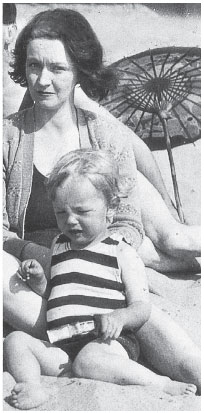
1. Norma Jeane and her
mother, Gladys Baker,
Los Angeles beach, 1928
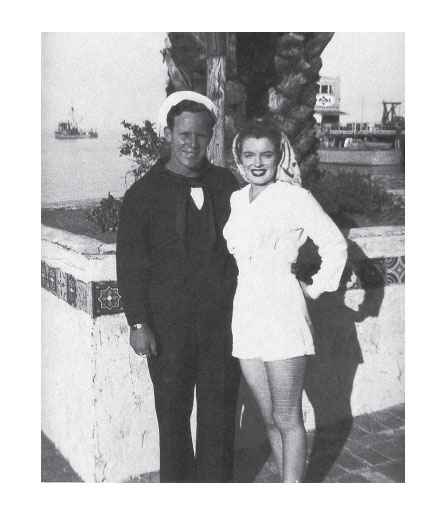
2. Norma Jeane and
her first husband,
Jim Dougherty, 1943
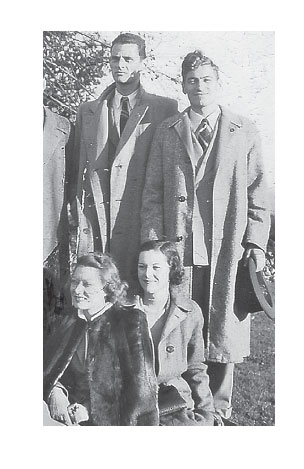
3. Arthur Miller, Norman Rosten,
Hedda Rosten and
Mary Slattery Miller, 1940
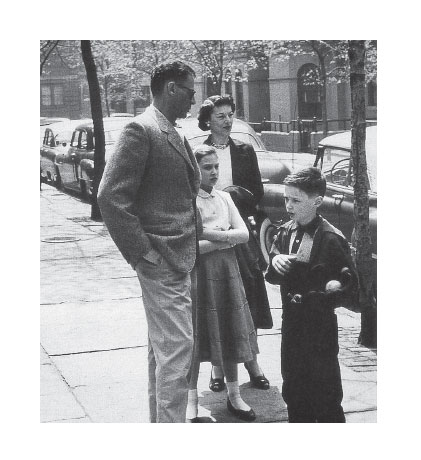
4. Miller with Mary
and his children,
Jane and Robert, 1953
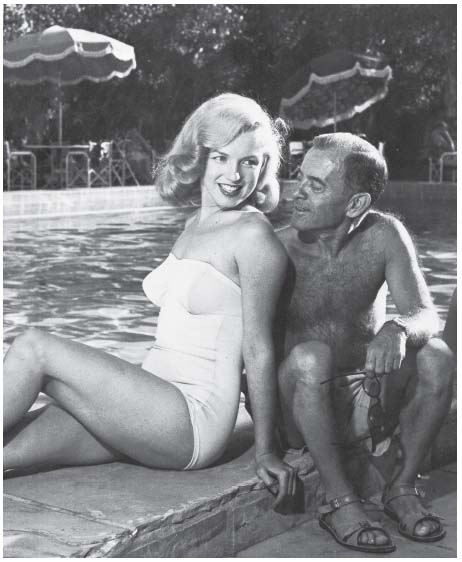
5. Marilyn and
Johnny Hyde,
late 1949
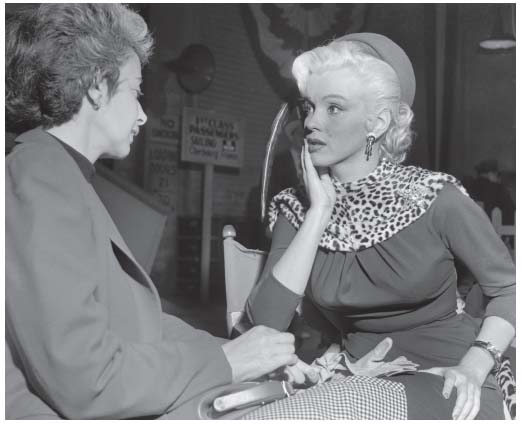
6. Marilyn
and Natasha
Lytess,
c
. 1952
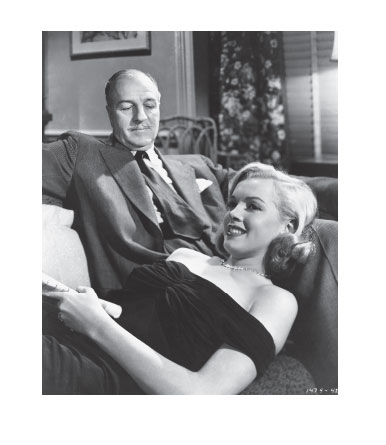
7. Marilyn and Louis Calhern
in
The Asphalt Jungle
, 1950
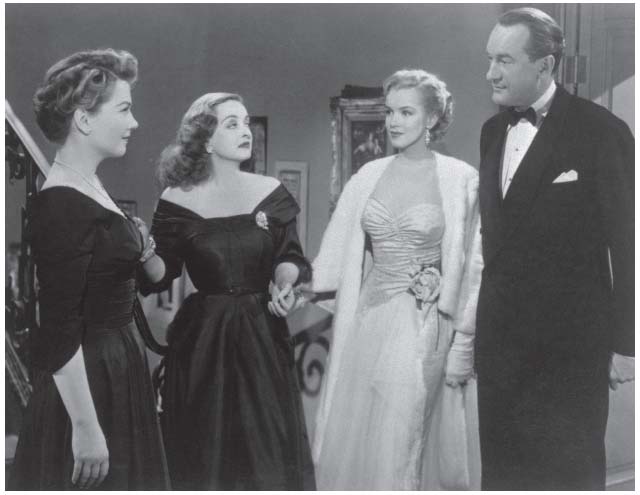
8. Marilyn with Anne Baxter, Bette Davis and George Sanders in
All About Eve
, 1950
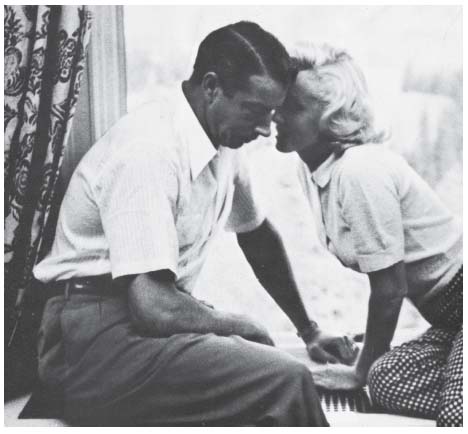
9. Marilyn and
Joe DiMaggio, 1953
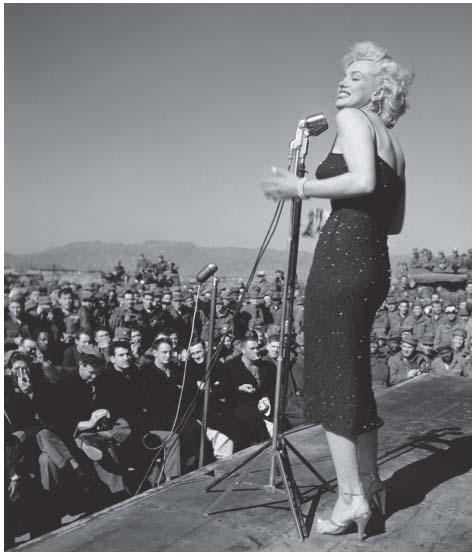
10. Marilyn
entertaining
troops in Korea,
February 1954
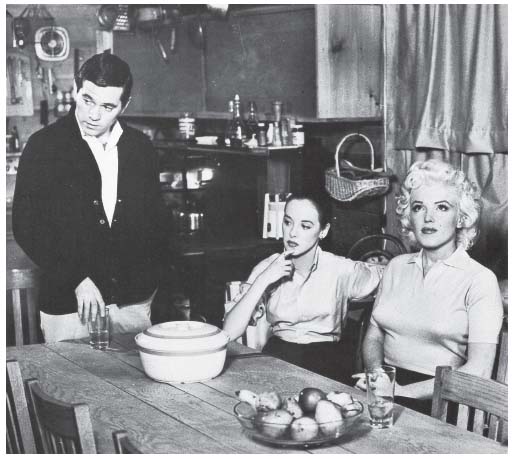
11. Marilyn with
Milton and Amy
Greene, 1955
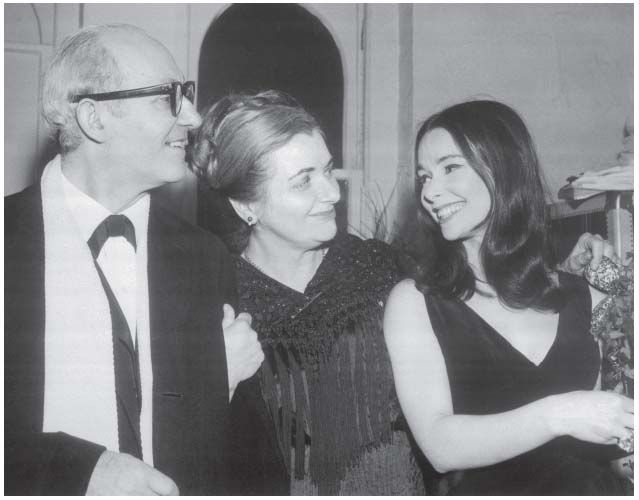
12. Lee, Paula and Susan Strasberg, 1963
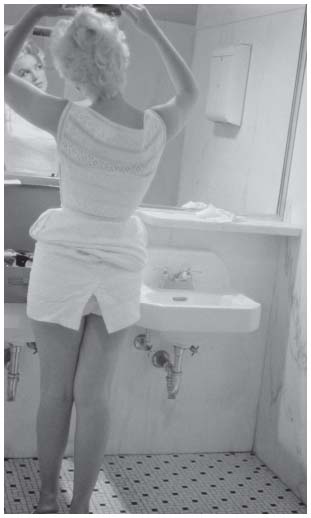
13. Marilyn in airport bathroom,
April 1955
